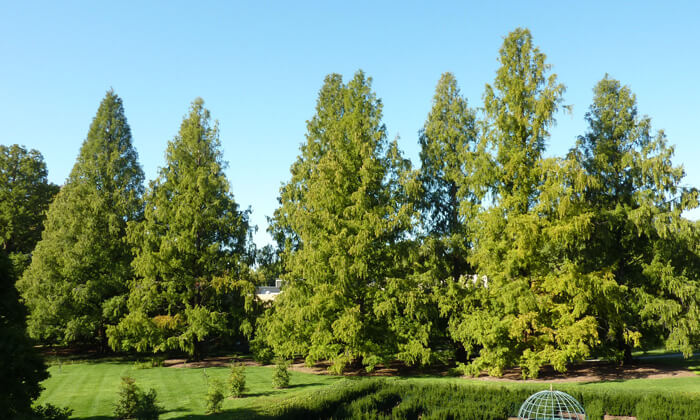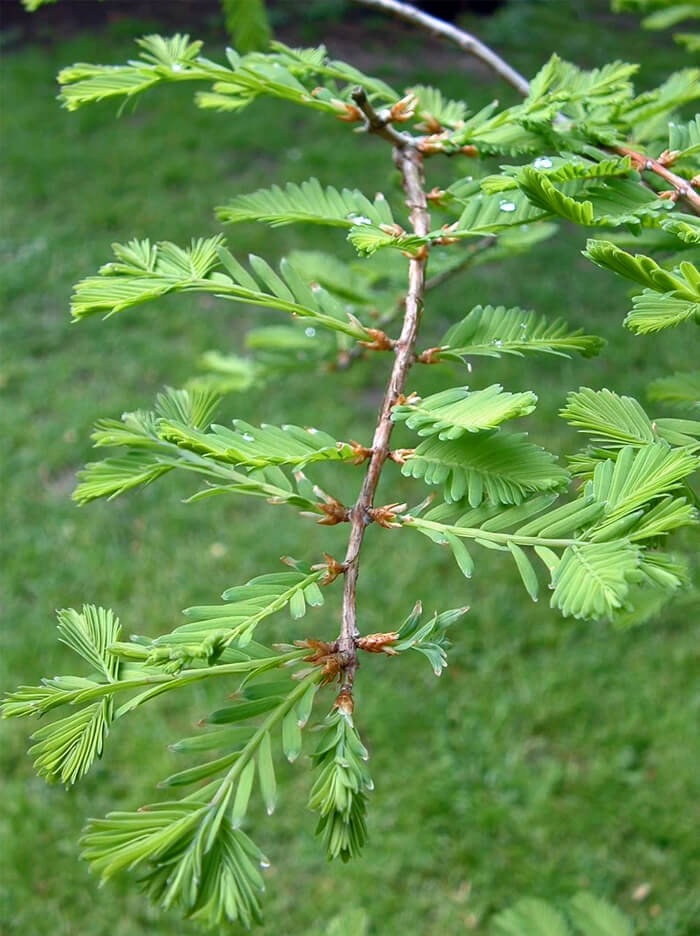Dawn RedwoodMetasequoia glyptostroboidesHeight: 100' average mature height Hardiness Zones: 4-8 Find my zone Aspect: afternoon shade to full sun
Size Availability
10 to 12 inch seedling - $8.50 each
Bulk Pricing: $7.50 each for 5 or more - 12% off
Ships free with orders of $75!Packed with a bagged root ball.
small plug - 10 to 14 inches tall - whip - $8.50 each
Bulk Pricing: $7.50 each for 5 or more - 12% off Bulk Pricing: $6.50 each for 10 or more - 24% off
Ships free with orders of $75!Packed with a bagged root ball.
2 to 3 feet tall - medium branching - $25.00 each
Bulk Pricing: $19.97 each for 5 or more - 20% off Bulk Pricing: $15.00 each for 10 or more - 40% off
Ships free with orders of $75!Packed with a bagged root ball.
The Dawn Redwood (
Metasequoia glyptostroboides
) is native to China and is one of the three surviving species of Redwood Trees, the other two being native to California. All three Redwood species are considered endangered but the Dawn Redwood was actually originally discovered through fossils but though extinct until a few surviving trees were discovered in 1944. New trees have been planted around the world from those survivors to prevent the extinction of this amazing conifer - you should add one to your landscape to help ensure the continuation of the species!
Today the Dawn Redwood has become very popular for its wide and thick branches, fast growth habit, and amazingly fissured bark. Additionally, the tree is deciduous and drops its foliage in the fall, revealing its attractive bark. Even most of the twigs drop off in the winter which gives the tree a very open appearance that lets in a lot of winter sun. Another unusual trait of the foliage is that unlike a lot of other conifers that have sharp needles, Dawn Redwoods have feather-soft foliage. In the garden the Dawn Redwood is a medium to large sized tree (still an impressive size of up to 100 feet tall, but smaller than the other two Redwood species) with a dense canopy. This makes an excellent shade tree because its branches spread wide unlike most conifers, but will also let light in during the cold winter months. They make a fine addition to Japanese and Asian style gardens. Dawn Redwoods are also very popular for bonsai plants because of their small foliage, ease of shaping, and large trunk diameter relative to its height. One of the traits that makes the Dawn Redwood unusual compared to other conifers is that they are very conducive to heavy pruning, with trees retaining the ability to produce a new leader after being topped. This allows for easy shaping and a fast developing trunk taper. Dawn Redwoods are probably the most forgiving conifer species for bonsai pruning and is a good species for those starting out. Dawn Redwoods are tolerant of growing in very wet conditions and can be sited in locations with occasional flooding.
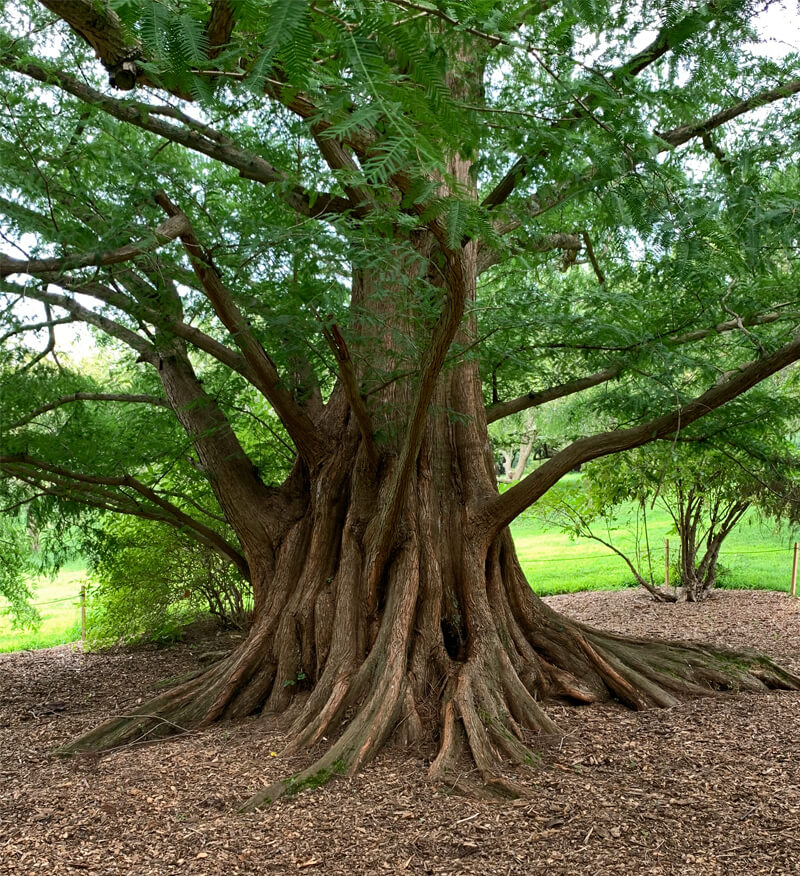
Dawn Redwoods produce a wide root
Source: Commons
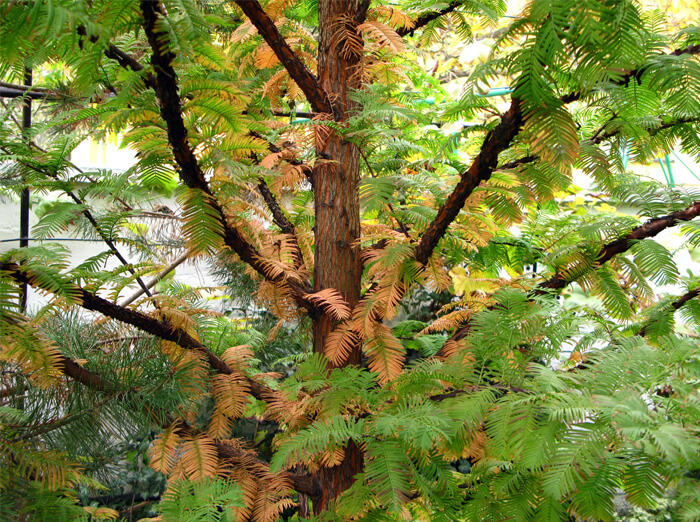
Even young trees develop nice sturdy trunks which are very straight.
Image Credit:
CC 3.0, Metasequoia
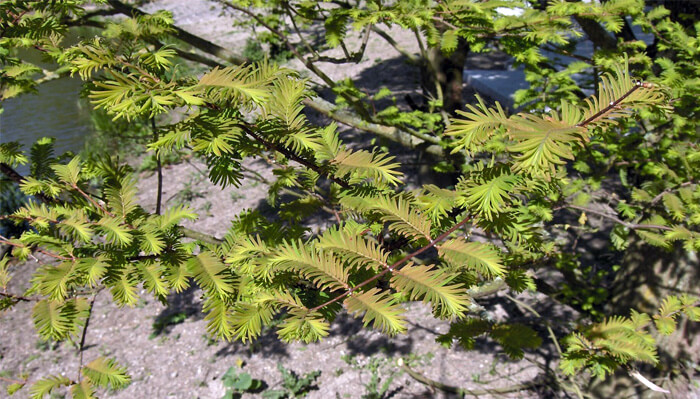
Branches splay out flat, one of the reasons it makes an excellent bonsai species.
Image Credit:
CC 3.0, Metasequoia
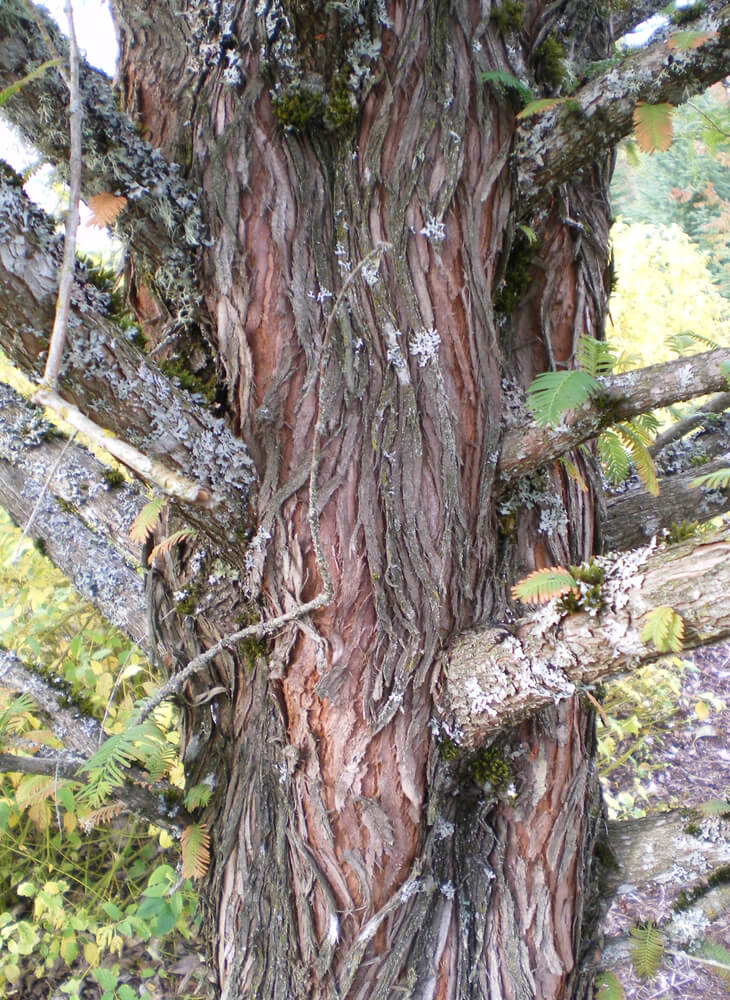
The fissured trunk of an older Dawn Redwood 
1 Gallon Plants 
A Dawn Redwood tree wrapped and ready to ship. 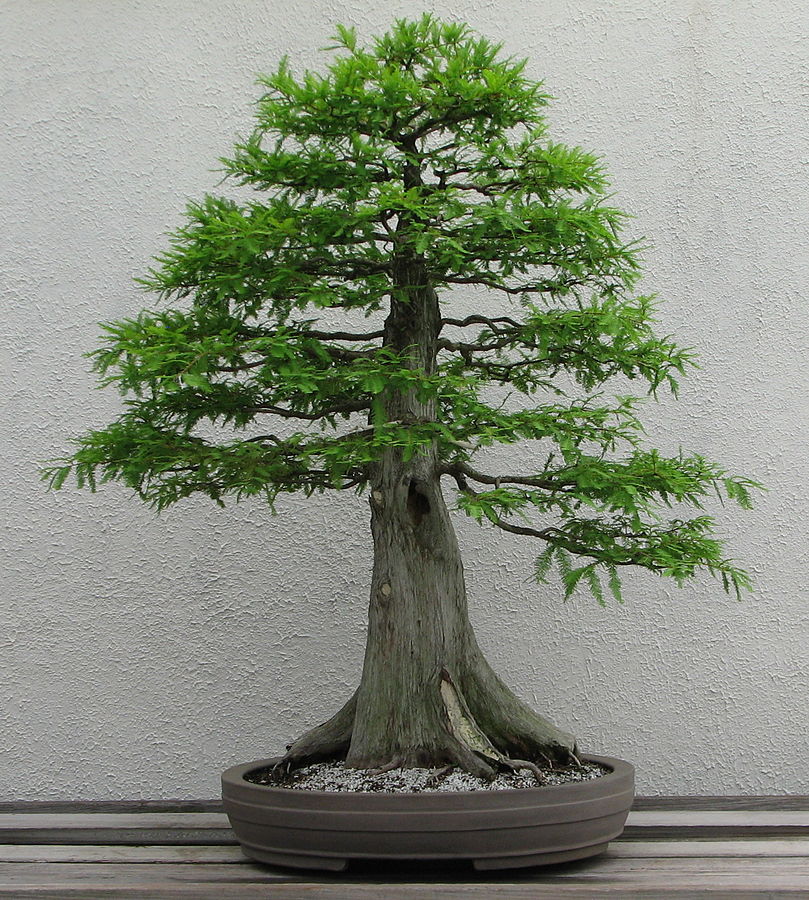
Dawn Redwood and Bald Cypress Trees (which are closely related) are frequently used for making bonsai because of their thick trunks, small/dense foliage, and generation of branches from old wood. Image credit: By Ragesoss - Own work , CC BY-SA 3.0 , https://commons.wikimedia.org/w/index.php?curid=2564254 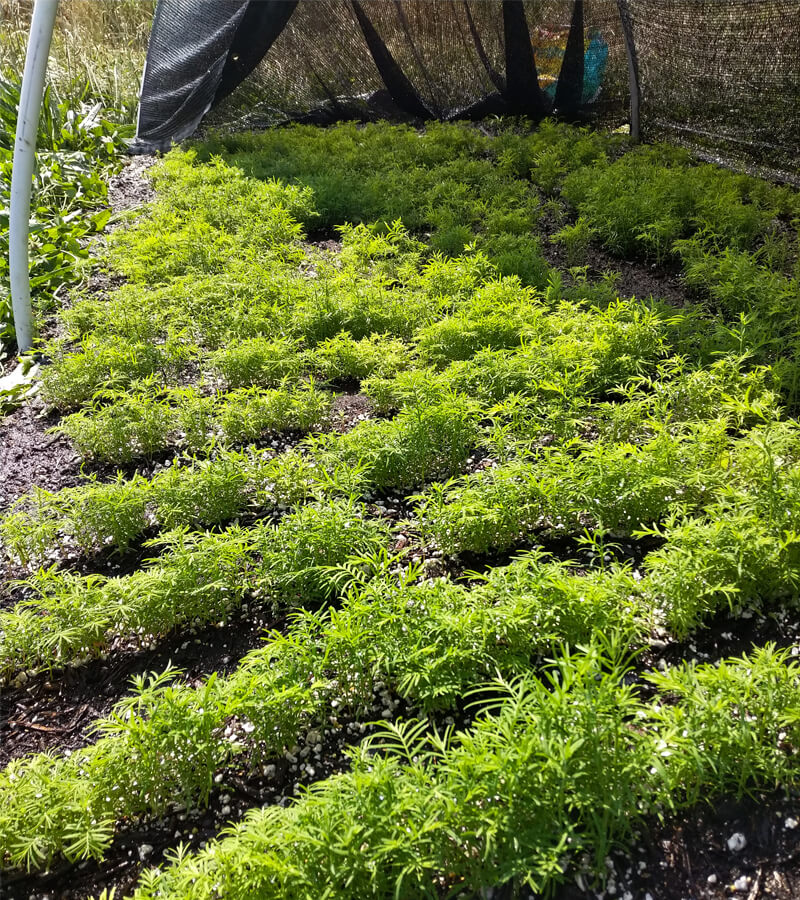
Growing Dawn Redwoods from seed.

Typical plug size (fall 2019 crop) 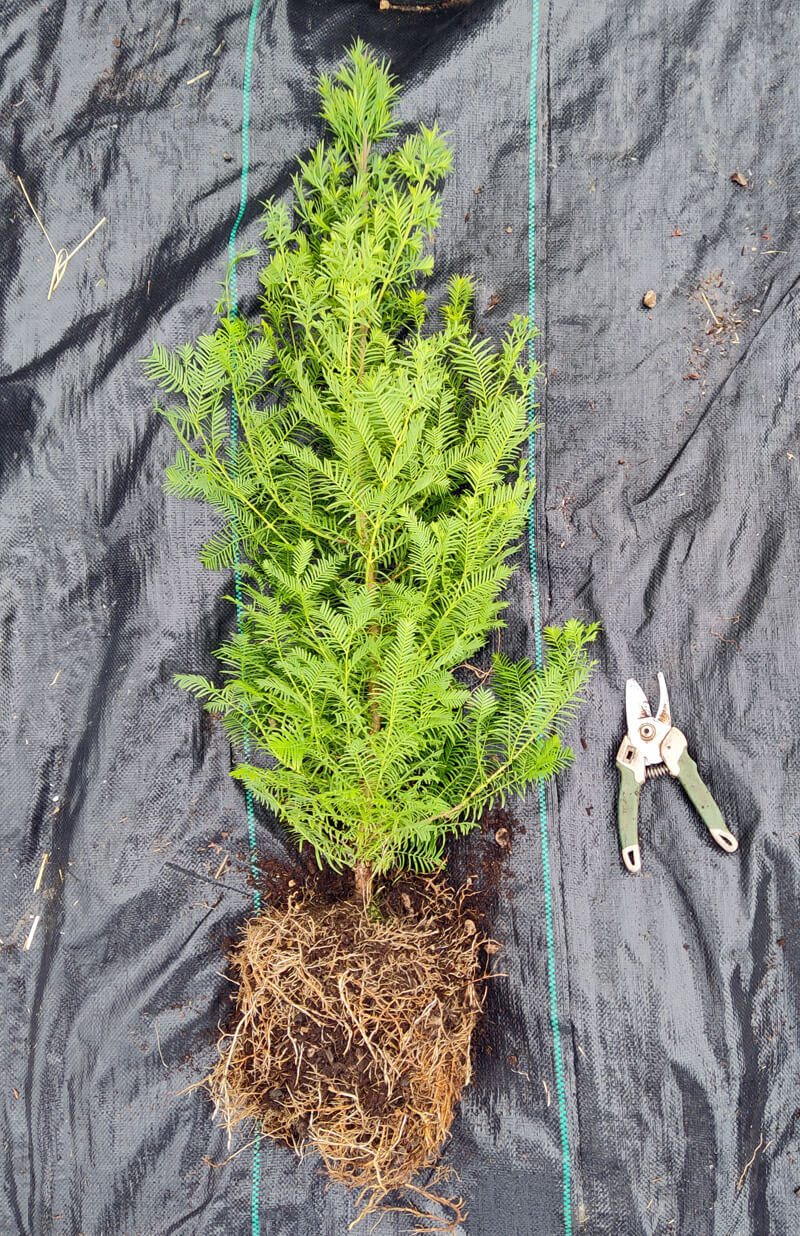
Metasequoia glyptostroboides - Dawn Redwood - 3 gallon size in summer
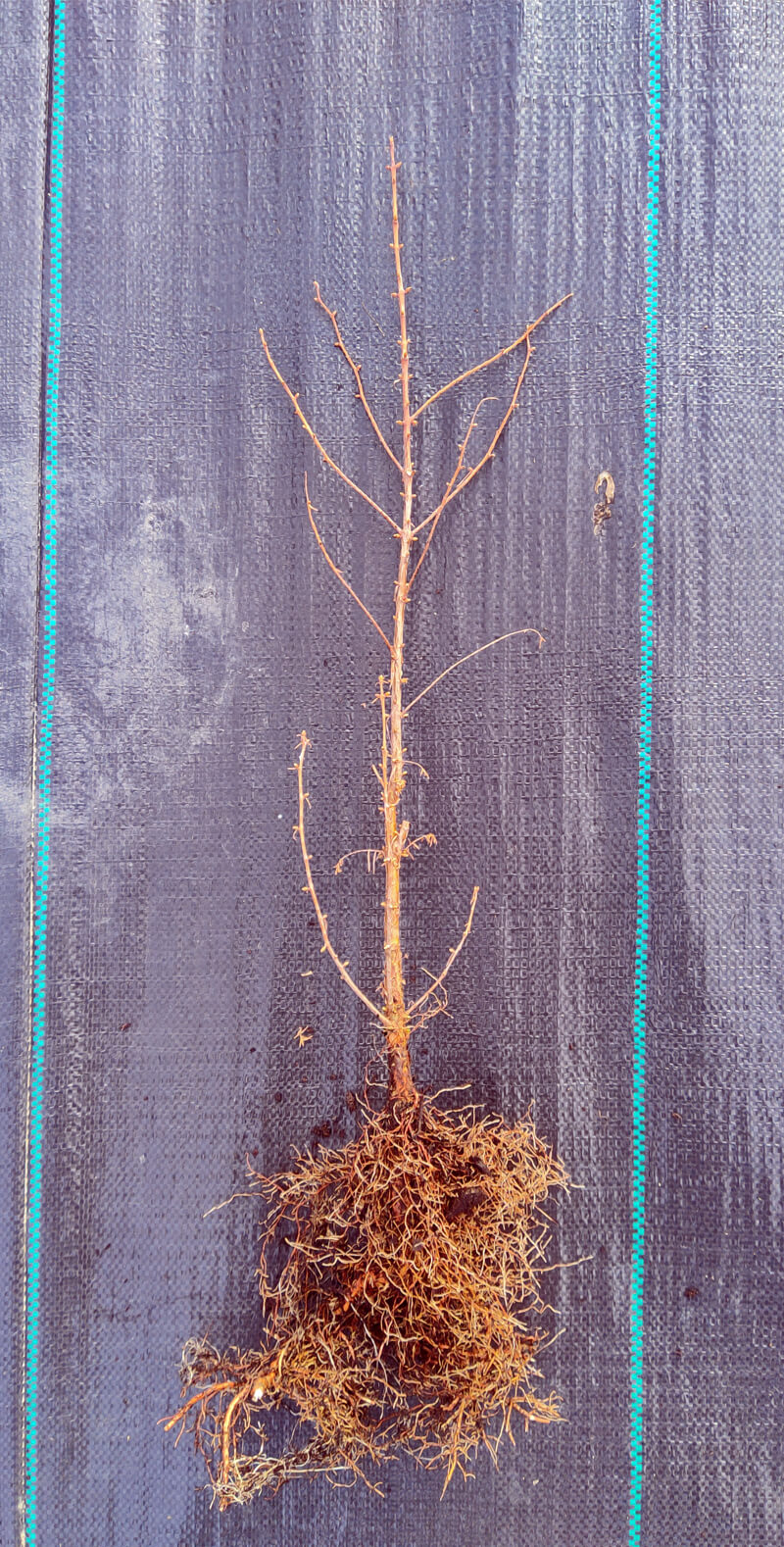
Metasequoia glyptostroboides - Dawn Redwood 1 gallon size in winter after its summer leaves have dropped
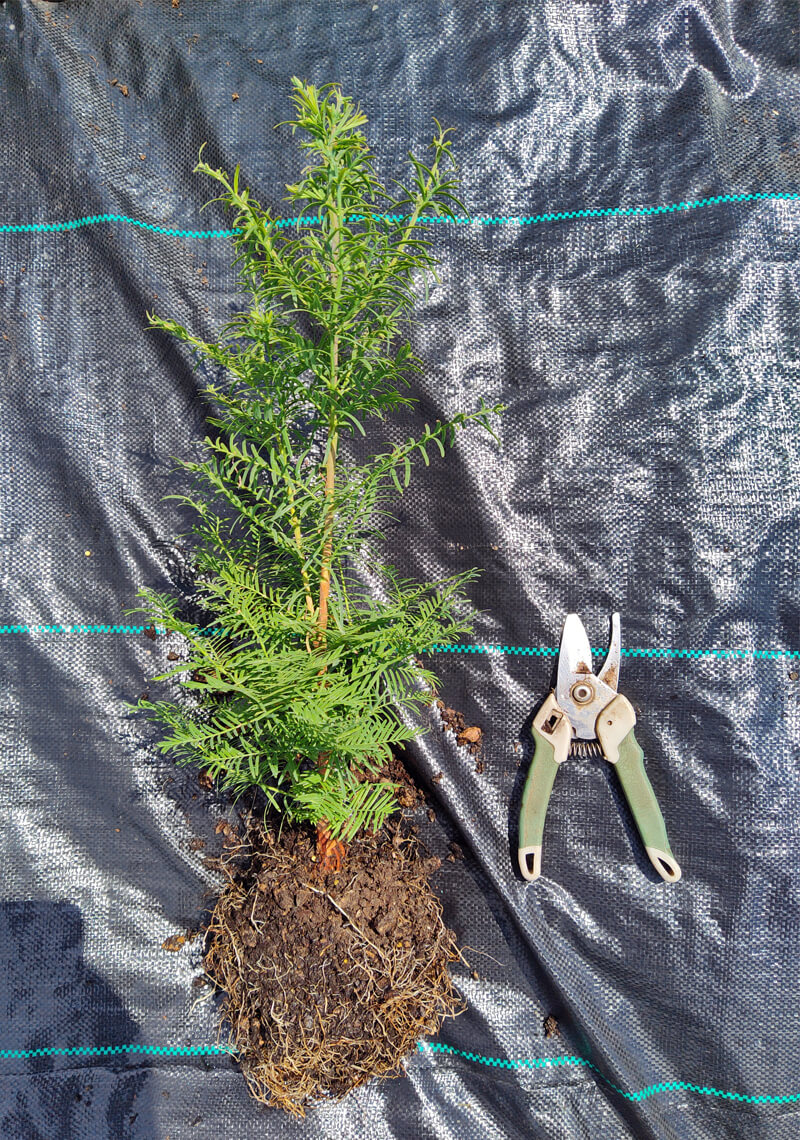
Metasequoia glyptostroboides - Dawn Redwood quart size
Packing Plants For ShippingMost of our plants are shipped bare root while they are dormant from late November through April and ship via the U.S. Postal Service. Bamboo plants can be shipped in their containers year-round by UPS.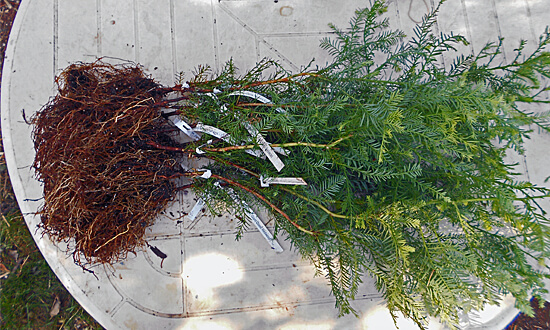 Bare root plants are soaked and wrapped together in bundles. ictured are 10x 24 inch tall Coast Redwoods. 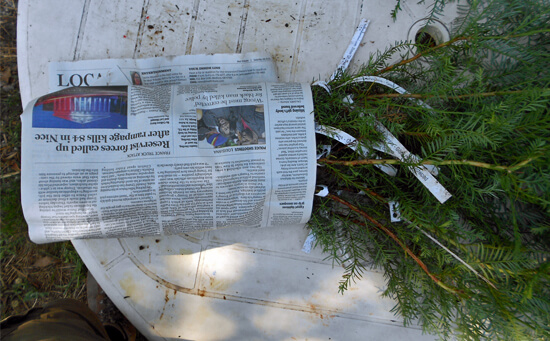 The bundled plants are wrapped in paper and labeled by variety. 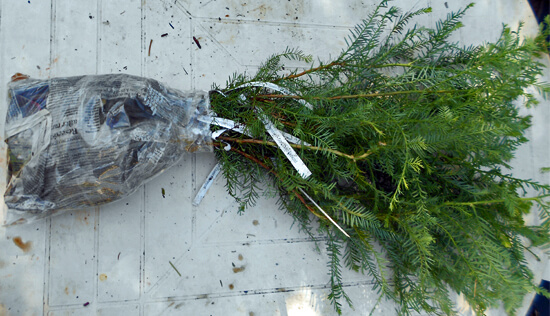 The bundle is wetted and bagged. 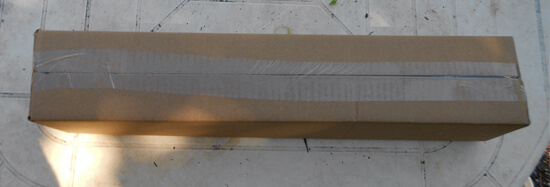 Bundles of plants are secured in long boxes. Pruning and Plant SizesWe prune both the tops and the roots of our plants at least once per year while they are growing in our nursery to ensure they develop a strong, dense form. Regular annual pruning goes a long way to ensure a healthy branching structure and this is often a missed step in many nurseries. Pruning a plant back hard after it has been neglected pruning-wise often results in an irregular branch habit or multiple leaders so we prune early and regularly instead. We also prune the roots of our plants while they are dormant which causes them to produce a much more branched structure and helps to elimate tangled masses that hinder future development. Plants that have been root pruned establish themselves much more quickly than root bound plants. Generally, hardwood plants will be pruned in the winter and conifers will be pruned in the summer.Before shipping plants we prune the tops and roots one last time. Conifers will usually have very little pruning except to balance out long branches. Shrubs are usually pruned to around 1-2 feet tall to encourage low branch development and small to medium sized trees are usually pruned to around 36-40 inches. Pruning trees at this height encourages dominant branches to begin forming around 3 feet from the ground which typically looks the best in most situations. However, if you want a tree to have branching start higher (some city codes require trees to not branch below 4 feet) we have longer boxes available. To request taller trees please contact us at least three days before your ship date. Depending on your location and the shipping routes there may be a fee for oversize package handling (usually about $15 for a 60 inch box). 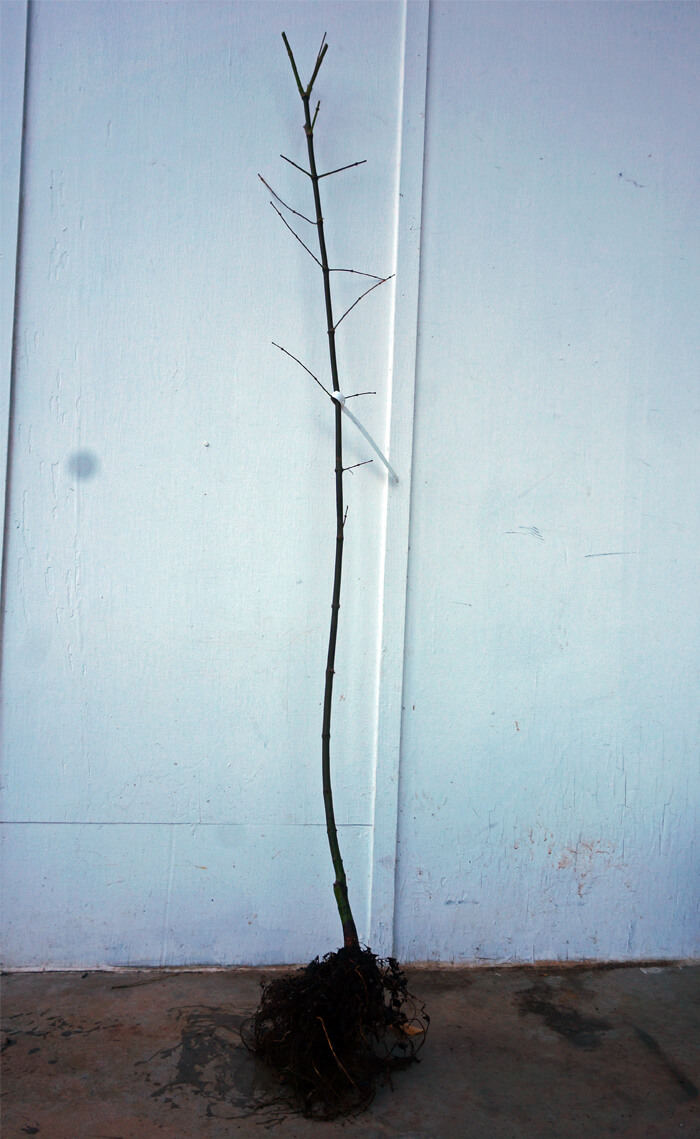 Tall trees (Oaks, Ginkgo, large Maples, etc.) are pruned to 40 inches to encourage crown development from about 36 inches and up 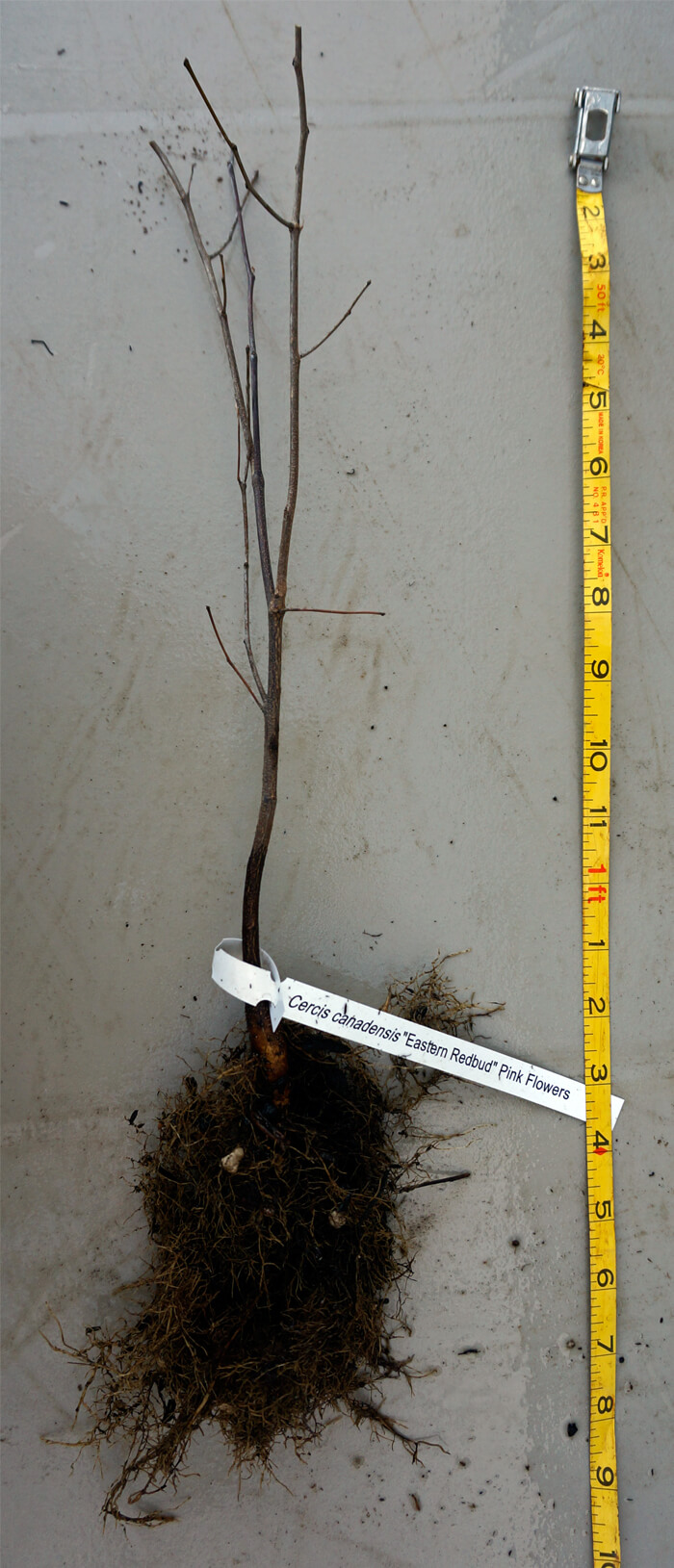 Small and medium trees (short Maples, Redbuds, Stewartia, etc.) are pruned 10-20 inches above the prune line from last year 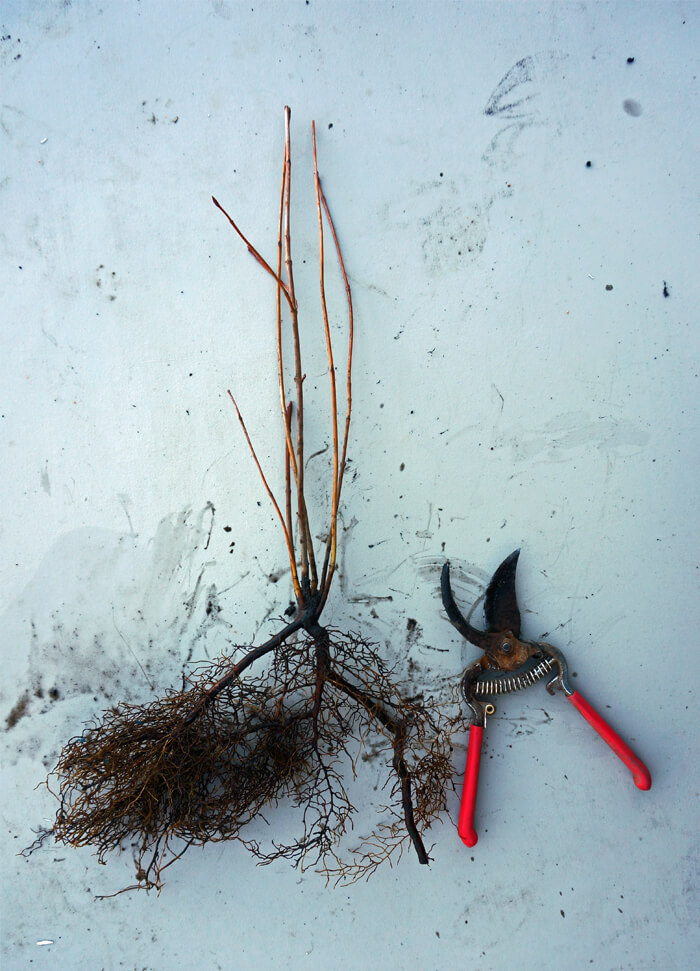 Shrubs (Weigela, Hydrangea, Viburnum, etc.) are pruned to 18 inches tall and root pruned one last time 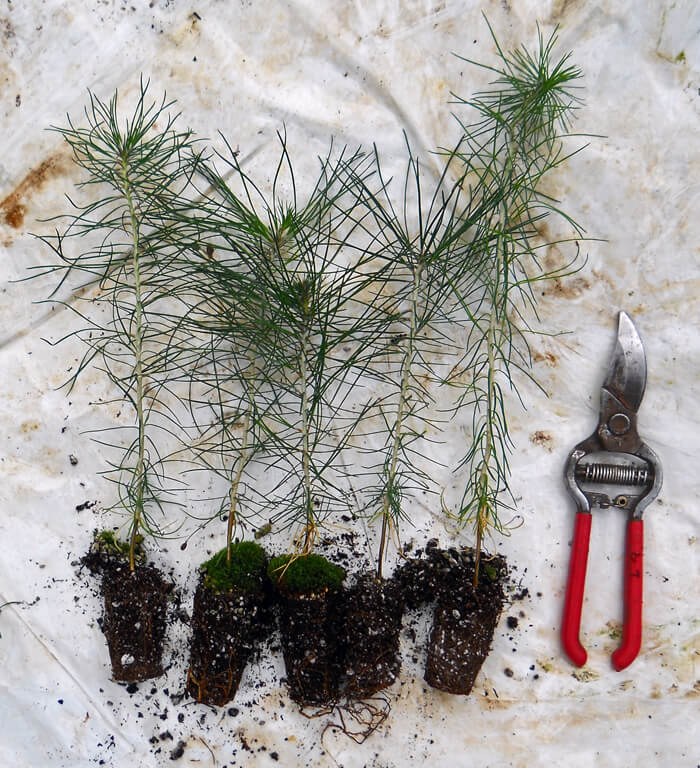 Small plug size Bamboo Plants Are Shipped In Their ContainersBamboo roots are not flexible and so plants have to be shipped in their containers. These plants are heavier and are shipped separately from bare root plants. Because they are potted they can handle longer transit times so can ship via UPS Ground instead of USPS Air Mail. Potted plants can also be shipped year-round.We regularly top our 1 gallon bamboo plants at 24-30 inches tall throughout the growing season. This results in dense, bushy foliage while allowing for economical shipping. From this size most running species will grow to 5-6 feet tall in the first spring and clumping species will usually grow to 4-5 feet tall. 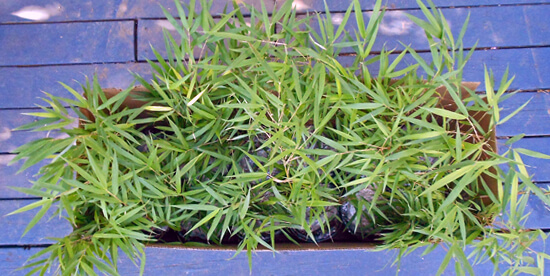 1 gallon bamboo plants strapped in and ready to be sealed. Unpacking Bare Root PlantsYou will be sent tracking details as soon as your plants are shipped. Unpack your plants as quickly as possible after they are delivered. We use two types of boxes, side-sealing and top-sealing. For boxes that are taped along the whole length you can cut the tape on either side and remove the plant bundles by cutting the tape holding the bundle to the bottom. For boxes that are sealed on the top and bottom, it is easiet to open the bottom of the box (the shipping label is at the top) and pull the bundle of plants out straight out. Check that the box is empty as there can be a second bundle of plants stuck towards the top.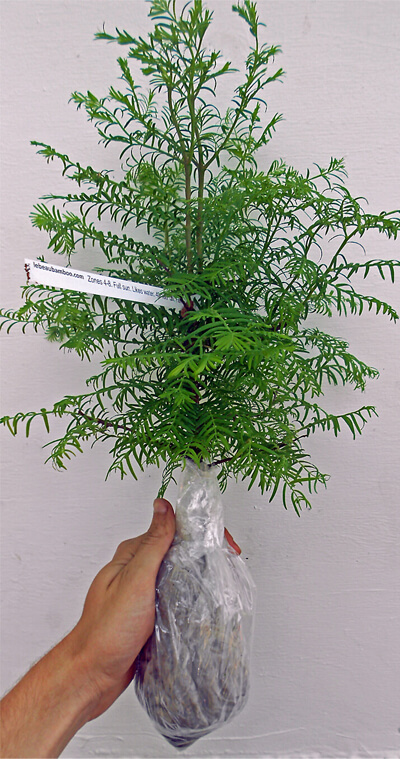 A bundle of trees. What if I am not able to plant right away?You can usually leave the plants in their shipping container unopened for 1-2 days if there were no shipping delays and you have received your plants from late November through February. Plants shipped when it is warmer can't stay in their packages for as long. |
Size Availability
10 to 12 inch seedling - $8.50 each
Bulk Pricing: $7.50 each for 5 or more - 12% off
Ships free with orders of $75!Packed with a bagged root ball.
small plug - 10 to 14 inches tall - whip - $8.50 each
Bulk Pricing: $7.50 each for 5 or more - 12% off Bulk Pricing: $6.50 each for 10 or more - 24% off
Ships free with orders of $75!Packed with a bagged root ball.
2 to 3 feet tall - medium branching - $25.00 each
Bulk Pricing: $19.97 each for 5 or more - 20% off Bulk Pricing: $15.00 each for 10 or more - 40% off
Ships free with orders of $75!Packed with a bagged root ball.
|


